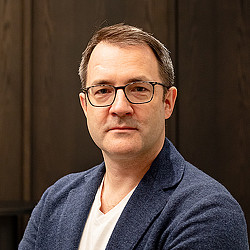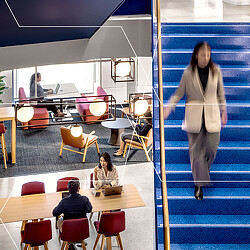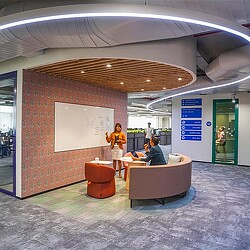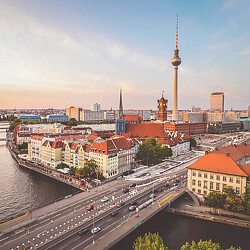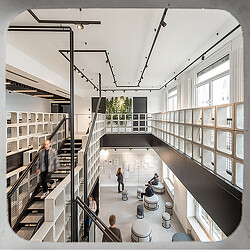Designing German Cities and Workplaces for a Thriving Economy
Gensler Germany’s leaders explore how urban design, workplace innovation, and strategic investment in public and private spaces can strengthen German cities.
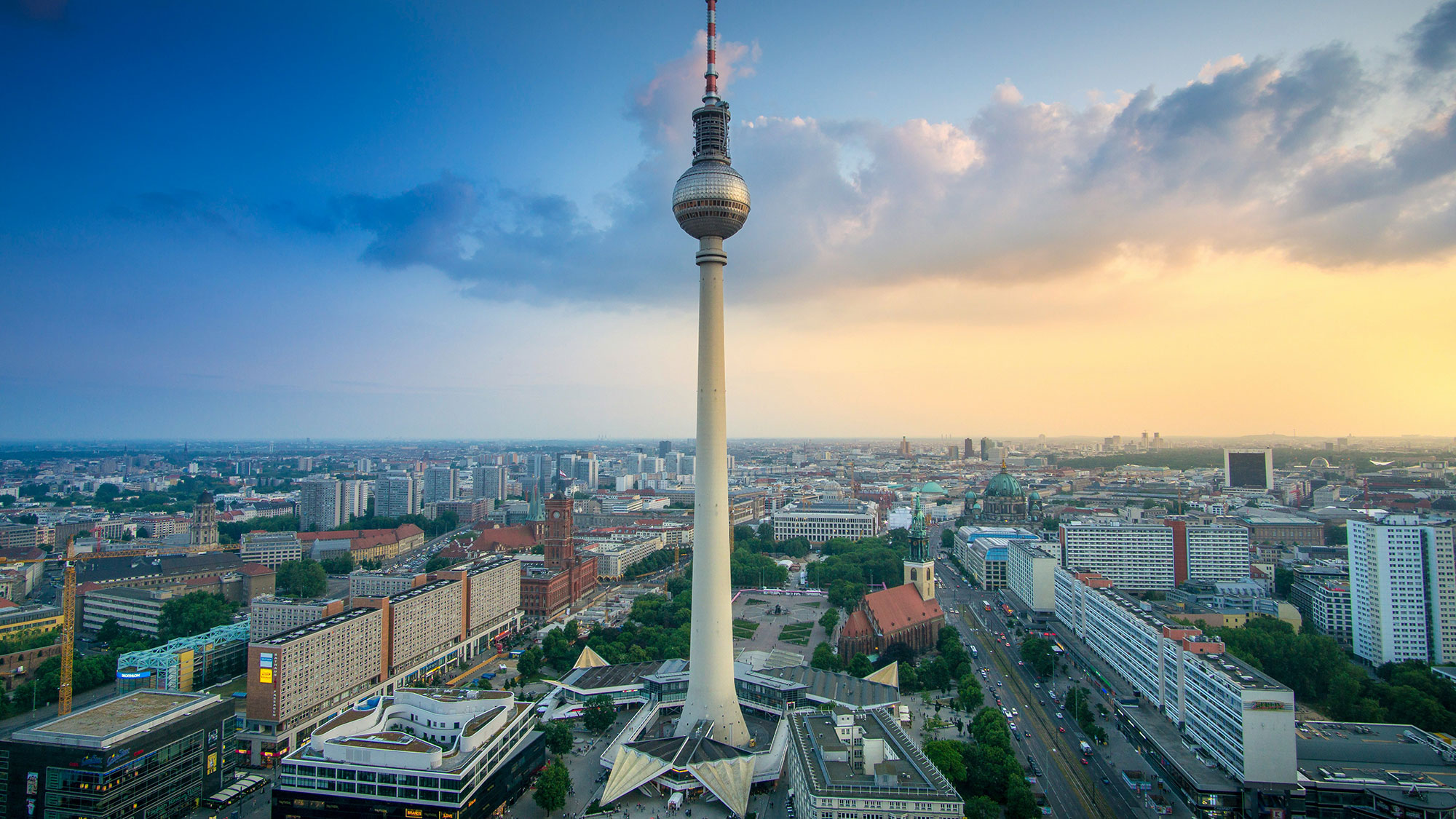
Germany’s economic landscape is at a pivotal moment. While global headwinds, shifting demographics, and the urgent need for sustainable transformation pose challenges, its cities continue to demonstrate resilience and appeal. Munich and Berlin are not only attracting new residents at a global scale but also retaining them — a key ingredient for economic vitality.
According to Gensler’s City Pulse 2025 survey, Munich ranks fourth globally for new residents, with 20% of people surveyed having recently relocated there. Berlin and Munich also rank among the top five cities worldwide for “staying power,” with 51% and 49% of residents, respectively, expressing a strong desire to remain. These findings highlight a unique opportunity for city leaders, policymakers, and the real estate sector to sustain this appeal and drive Germany’s economic growth.
In this Q&A, recent Lukasz Platkowski, managing director, Gensler Germany, and Philip Tidd, a principal and regional client relationships leader based in Gensler’s Munich office, explore how urban design, workplace innovation, and strategic investment in public and private spaces can strengthen German cities, attract and retain talent, and support long-term sustainable growth.
Gensler’s City Pulse 2025 survey highlights Munich and Berlin as global leaders in attracting and retaining residents. What do you see as the main drivers behind this “magnetic city” effect, especially in terms of economic opportunity and productivity?
Lukasz Platkowski: Munich and Berlin are very different in character, but they share one important trait: the pace of change and the opportunities emerging from it.
In Berlin, it’s the city’s diversity, multiculturalism, and lifestyle that draw people in. We’re seeing strong growth in life sciences, technology, hospitality, and leisure, all of which are fuelling new opportunities. While required steps in the design process and associated permits and documentation can slow things down, as is often the case in Germany, the overall dynamism of Berlin’s economy continues to attract both residents and businesses. Despite three years of economic headwinds, Germany remains Europe’s largest economic powerhouse, with its GDP in 2025 estimated at €4.3 trillion. With new government investments, Berlin is well-positioned to continue building on its appeal.
Philip Tidd: Munich, on the other hand, is cementing its reputation as one of Europe’s leading hubs for talent. Much of this is anchored by the Technical University of Munich, one of Germany’s premier institutions for advanced engineering, robotics, and AI. It’s no coincidence that OpenAI chose Munich as the location of its first European office, as the talent pool here is exceptional.
Beyond the workforce, Munich offers a quality of life that blends world-class technical expertise with lifestyle advantages — some even compare it to San Francisco. Munich has become a magnet not just for global tech firms, but also for professionals seeking a balance of career opportunity and liveability. Both Munich and Berlin face housing affordability challenges, but their ability to attract top talent continues to drive economic strength.
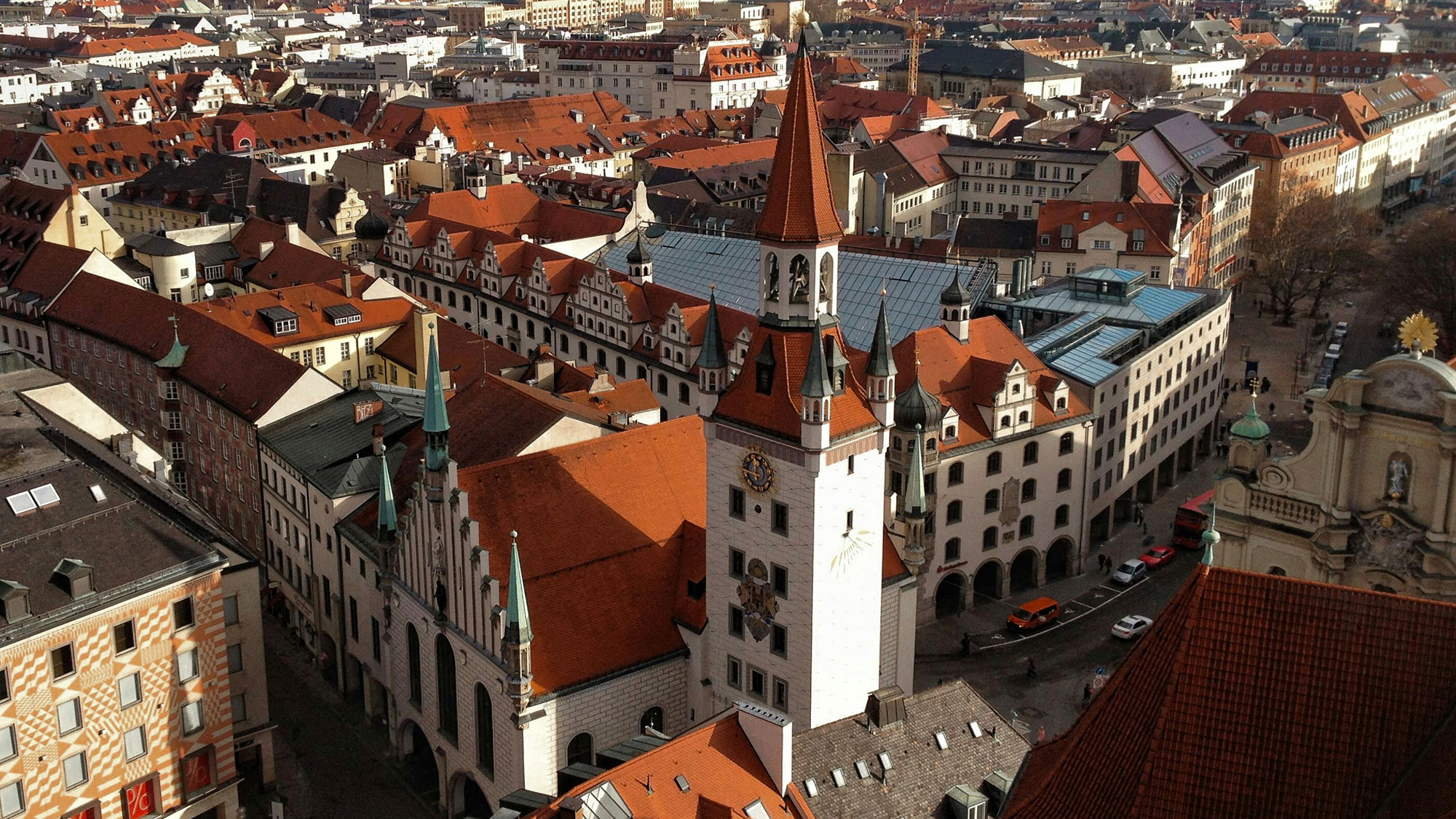
Are there particular sectors where urban design and real estate can drive Germany’s economic goals in the next 5–10 years?
Lukasz: In the next three years, Germany will benefit from the €630 billion “Made for Germany” initiative launched by 61 major private companies. In addition to this, a governmental “growth booster” program — to include significant tax incentives and €500 billion investments into infrastructure — will bring back competitiveness to core sectors like automotive, engineering, chemicals, pharmaceuticals, and renewable energy. At the same time, newer sectors such as AI, data centres, and advanced manufacturing are set to play a defining role.
Housing is also a pressing issue. Germany faces a housing shortage across major cities, so real estate will inevitably be part of the solution. Another area we see growing is building transformation — reimagining and adapting existing stock — which we have been doing more of at Gensler both in the U.S. and the U.K. While office-to-residential conversions remain difficult due to regulatory and financial hurdles, office-to-hotel and office-to-commercial conversions are gaining momentum. These transformations not only meet market demand but also positively impact sustainability goals by reusing existing structures.
Philip: Absolutely. Building transformation is a conversation we’re having with clients, developers, and investors across Germany. While residential conversions are complex due to more stringent use-class designations, we are seeing more interest in repurposing offices into hotels or other commercial uses. This aligns with the broader push for sustainability, since adapting existing buildings has clear environmental benefits.
Hospitality, both in the traditional sense and integrated into workplaces and public spaces, is also a growing sector. These shifts highlight how real estate can directly support economic goals by enabling industries to evolve, attracting talent, and fostering vibrant, liveable cities.

How can real estate development and architectural design play a direct role in driving economic growth and stimulating Germany’s economy?
Philip: In Germany, much of the real estate market revolves around what are known as the “Big Seven” cities: Berlin, Munich, Hamburg, Frankfurt, Stuttgart, Cologne, and Düsseldorf. Together, they account for around 70% of all real estate transactions in the country.
But what’s equally interesting are the secondary cities that surround them. Take Mannheim, for example, just 20 minutes by train from Frankfurt, yet home to BASF, the world’s largest chemical company. These regional hubs play a critical role in Germany’s economy and should not be overlooked when we think about how real estate development can stimulate growth.
What we’re seeing across many of the Big Seven, and particularly in Munich and Frankfurt, is a clear “flight to quality.” Major global clients increasingly want to be in central city locations, and they’re seeking high-quality, sustainable buildings. This is fueling a city-centre revival, as opposed to expansion on the urban fringe.
Lukasz: Ultimately, when development and design raise the bar — delivering new or adapting old buildings that are sustainable, resilient, and embedded in vibrant city centres — they not only improve the urban experience, but drive economic productivity by attracting talent, supporting businesses, and strengthening Germany’s position in an increasingly competitive global market. Quality and innovation in materials (like hybrid mass timber) and innovation in technology becomes a real differentiator and attractor for tenants, because of design quality and alignment with sustainability, resilience, and liveability priorities.
Sustainability, resilience, and liveability are top concerns for residents. What strategies should German cities and businesses adopt to ensure they remain competitive and desirable on a global scale?
Lukasz: Germany has long set high standards for sustainability, with certificates like DGNB driving progress in building quality. But the question now is: what comes next, and which strategies will deliver the greatest impact? One opportunity lies in rethinking models like public-private partnerships (common in the U.S.) to channel investment more broadly — not just into individual buildings, but also into surrounding public spaces and infrastructure. This approach can create greener streets, improve connectivity, and strengthen neighbourhoods as a whole. To make this systemic impact possible, collaboration between developers, municipalities, and investors will be essential, especially when moving beyond long-approved, and sometimes outdated, master plans.
Liveability is equally important. Cities like Berlin and Munich can excel in improving mixed-use developments, where people can live, work, and socialise in the same neighbourhoods. This creates vibrant streets that remain active beyond office hours, supporting economic vitality and social cohesion. By integrating sustainable design with liveable urban environments, German cities can continue to be globally competitive while offering exceptional quality of life.
Gensler’s 2025 Global Workplace Survey tracks how work patterns are changing. How should companies and developers in Germany adapt workplaces to boost productivity while also meeting the needs of both employers and a new generation of workers?
Philip: Since the pandemic, the desire to work from home remains strong among German employees, and many companies are still struggling to bring teams back to the office full-time. Our work on projects like Synopsys has shown that employees are more motivated to come into the office when the space is well-located, thoughtfully designed, and conducive to teamwork. High-quality, city-centre workplaces that encourage in-person collaboration can boost both attendance and overall productivity.
Location, design, and connection to nature are increasingly important for employees in Germany. Developers who prioritise sustainability, access to daylight, greenery, and spaces that encourage informal interaction are already seeing positive results. The most effective workplaces balance flexibility with intentional opportunities for collaboration, creating environments that support both employee satisfaction and company performance.

If you could give one recommendation to city leaders, developers, and policymakers to redefine the future of German cities and workplaces over the next decade, what would it be?
Philip: One of the most impactful opportunities for German cities is rethinking the relationship between private development and public space. Many public areas in cities like Berlin and Munich are strictly regulated. By creating broader frameworks for public-private partnerships, developers could invest in upgrading streets, plazas, and terraces adjacent to their projects. This approach would elevate the quality of public spaces, activate street life, and strengthen the connection between buildings and the urban environment, benefiting both residents and businesses.
Lukasz: We also see the need to simplify bureaucratic processes that often slow innovation and development. While regulations are extremely important to maintain the quality of the built environment and ensure safety and security, they can prevent developers and city leaders from implementing creative solutions. By streamlining processes and driving collaboration between city authorities and developers, German cities could more easily adapt to the needs of modern businesses and a new generation of workers. Combined with high-quality public-private projects, these changes would help cities remain competitive, resilient, and vibrant over the next decade.
For media inquiries, email .
